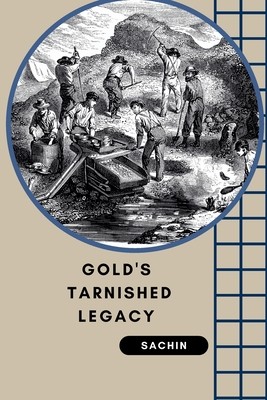
- We will send in 10–14 business days.
- Author: Sachin
- Publisher: tredition GmbH
- ISBN-10: 3384226763
- ISBN-13: 9783384226761
- Format: 15.2 x 22.9 x 0.5 cm, minkšti viršeliai
- Language: English
- SAVE -10% with code: EXTRA
Reviews
Description
The South African gold mining industry has historically been a major driver of the country's economy as well as socio-political landscape (Smit, 2013). For over a century it has provided employment, investments, infrastructure, and taxes (Onn and Woodley, 2014; Schonfeld et al., 2014), and been responsible for the development of dozens of cities and towns across the country, most notable of which is Johannesburg (Naicker et al., 2003; Durand, 2012; Ojelede et al., 2012; Kneen et al., 2015). Gold was first discovered in the Witwatersrand Basin in 1886, a geographical feature that was once the largest gold resource in the world (Minerals Council South Africa, n.d.). This discovery transformed South Africa's agricultural economy into a mining economy, and opened the country up for international trade (Durand, 2012; Rand Refinery, 2013). However, the gold mining industry is also responsible for a legacy of inequality, exploitation, damaged family structures, health impacts and environmental degradation (Lawrence and Samkin, 2005; Durand, 2012; de Villiers et al., 2014; International Human Rights Clinic (IHRC), 2016). Furthermore, it is important to note that apartheid is inextricably linked to the gold mining industry in particular (de Villiers et al., 2014; Benchmarks Foundation, 2017). The industry has left a legacy of ownerless and abandoned mines and tailing storage facilities that compromise the health and safety of nearby communities and eco-systems due to air, water and soil pollution including but not limited to acid mine drainage (Winde and van der Walt, 2004; Duruibe et al., 2007; Durand, 2012; Bobbins, 2015). Furthermore, the gold industry is in decline and global commodity markets are turbulent (Mudd, 2007; Hartnady, 2009; Chamber of Mines of South Africa, 2017). From 2004 to 2016, South Africa's percentage of global gold production fell from 13.5% to 4.4% (Chamber of Mines of South Africa, 2017). Furthermore, the Witwatersrand reserves are nearly exhausted
EXTRA 10 % discount with code: EXTRA
The promotion ends in 23d.14:16:40
The discount code is valid when purchasing from 10 €. Discounts do not stack.
- Author: Sachin
- Publisher: tredition GmbH
- ISBN-10: 3384226763
- ISBN-13: 9783384226761
- Format: 15.2 x 22.9 x 0.5 cm, minkšti viršeliai
- Language: English English
The South African gold mining industry has historically been a major driver of the country's economy as well as socio-political landscape (Smit, 2013). For over a century it has provided employment, investments, infrastructure, and taxes (Onn and Woodley, 2014; Schonfeld et al., 2014), and been responsible for the development of dozens of cities and towns across the country, most notable of which is Johannesburg (Naicker et al., 2003; Durand, 2012; Ojelede et al., 2012; Kneen et al., 2015). Gold was first discovered in the Witwatersrand Basin in 1886, a geographical feature that was once the largest gold resource in the world (Minerals Council South Africa, n.d.). This discovery transformed South Africa's agricultural economy into a mining economy, and opened the country up for international trade (Durand, 2012; Rand Refinery, 2013). However, the gold mining industry is also responsible for a legacy of inequality, exploitation, damaged family structures, health impacts and environmental degradation (Lawrence and Samkin, 2005; Durand, 2012; de Villiers et al., 2014; International Human Rights Clinic (IHRC), 2016). Furthermore, it is important to note that apartheid is inextricably linked to the gold mining industry in particular (de Villiers et al., 2014; Benchmarks Foundation, 2017). The industry has left a legacy of ownerless and abandoned mines and tailing storage facilities that compromise the health and safety of nearby communities and eco-systems due to air, water and soil pollution including but not limited to acid mine drainage (Winde and van der Walt, 2004; Duruibe et al., 2007; Durand, 2012; Bobbins, 2015). Furthermore, the gold industry is in decline and global commodity markets are turbulent (Mudd, 2007; Hartnady, 2009; Chamber of Mines of South Africa, 2017). From 2004 to 2016, South Africa's percentage of global gold production fell from 13.5% to 4.4% (Chamber of Mines of South Africa, 2017). Furthermore, the Witwatersrand reserves are nearly exhausted


Reviews